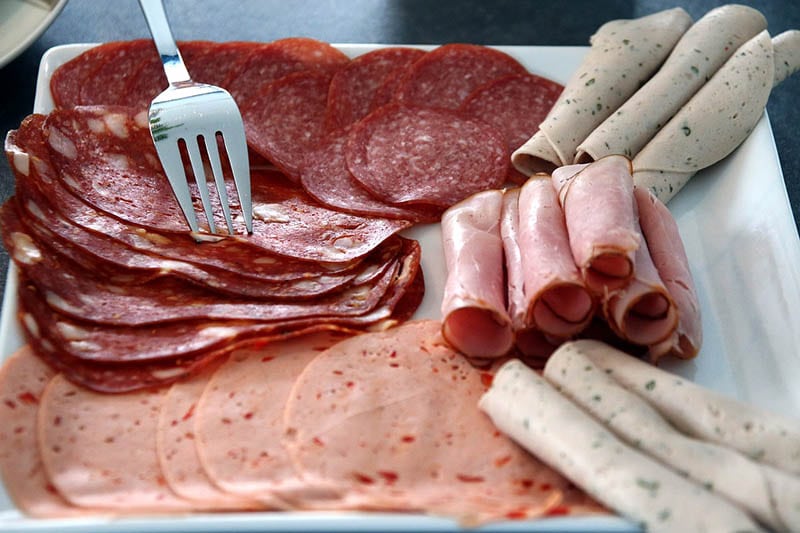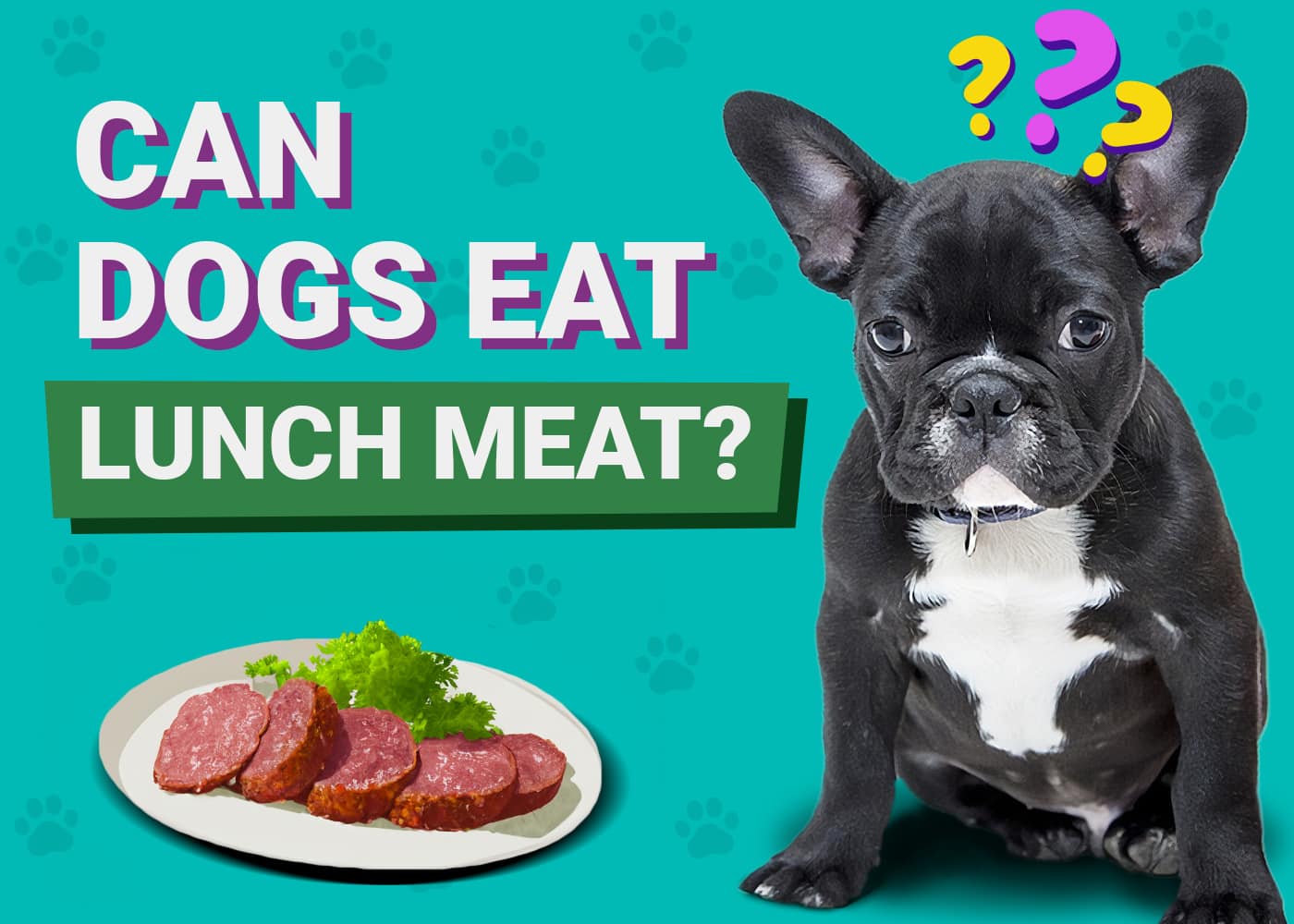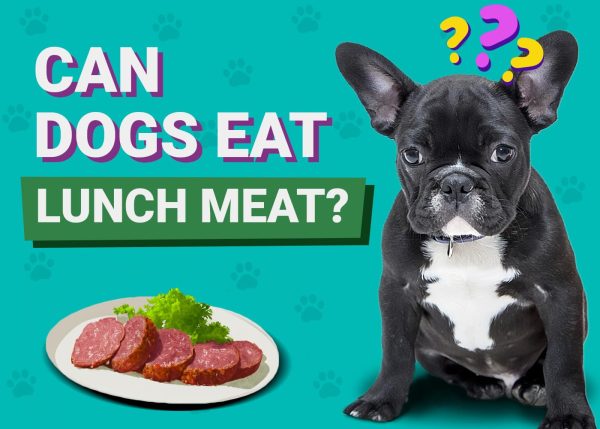Dogs enjoy eating meats and meat-flavored snacks. However, not all meat is safe for dogs to eat, including lunch meats. While it’s not likely for your dog to get sick if they eat a small piece of lunch meat, continuously feeding your dog lunch meat can lead to health complications over time.
Because there are so many other meat options that are safer for dogs to eat, it’s best to avoid giving your dog lunch meat in order to protect their health. Here’s what you need to know about the dangers of feeding your dog lunch meat and how you can ensure your dog continuously eats a healthy and nutritious diet.
Why Dogs Should Avoid Lunch Meats
Dogs should avoid eating lunch meats for several main reasons: salt, seasonings, preservatives, colorings, and nitrates. The curing and preparation process for lunch meats and deli meats involves a lot of salt, additives, spices and seasonings. A lot of these may be harmful to dogs and lead to signs of a stomach upset and discomfort, while others, such as garlic and onion powder, depending on dose and the dog’s size, may be toxic. Sometimes lunch meats are actually quite fatty, which again in some dogs will cause vomiting and diarrhea.

Salt
It’s not likely that dogs will experience salt poisoning from a small piece of lunch meat that you dropped on the floor, but if we’re talking about the whole meal and a smaller dog, it’s still possible.
If your dog still somehow ingests too much salt and ends up experiencing salt poisoning, you may start to see some of the following signs:
- Decreased appetite
- Diarrhea
- Excessive thirst
- Incoordination
- Lethargy
- Tremors
- Vomiting
These signs can become apparent after a dog eats 2 or more grams of salt per kilogram of their body weight. In severe cases, dogs can have seizures or fall into a coma. Salt poisoning can be fatal, so it’s important to contact your veterinarian or emergency animal hospital right away to stabilize your dog’s condition as quickly as possible.
At the moment, there isn’t enough evidence to connect chronic excess of dietary salt to problems with heart and kidney health or high blood pressure in dogs, but we should follow the AAFCO recommendations on the minimum salt requirements.1, 2 Dogs seem to cope better with a variety of salt concentrations in their diet, and are eating much less salt than we are.

Other Additives
Another common additive in lunch meats is carrageenan, which has been used as a dog food additive, gelling agent and thickener, but the safety of this compound cannot be determined based on the latest available evidence.3
Nitrates are often used as a preservative in lunch meats. Consuming high levels of added nitrates can lead to health complications in humans, although there is some controversial and conflicting evidence of this.4 Nitrates are notoriously known for increasing the risk of cancer in people. Along with lunch meat, hot dogs, bacon, and ham, and green leafy veggies contain high concentrations of added nitrates.
There are no current established guidelines on the use of nitrates in dog food. Some historical records show that toxicity has occurred in both dogs and cats that were fed a commercial food with excess of nitrite, leading to death in some animals.5 There were also studies on excessive amounts of nitrates and nitrites and their effect on the dog’s thyroid gland and red blood cells. As we can see, there are risks associated with all these additives, mainly dependent on the dose, but the message is clear – lunch meats are not a safe choice for our dog.

Healthier Alternatives to Lunch Meat
Because there are so many meat-based options available for dogs to eat, there’s really no need for them to eat lunch meat or deli meat. Plus, it may be quite harmful for them. Many dogs can enjoy all kinds of unprocessed meats as long as they don’t have a food allergy to a particular kind of meat.
Just make sure to prepare the meat correctly before serving it to your dog. The meat should be cooked thoroughly according to the CDC’s recommended cooking temperatures. It’s also important to make sure your dog eats cooked meat or canned dog food quickly. Meat that’s left out for more than 2 hours, or more than 1 hour in temperatures above 90°F, can lead to food poisoning.
Giving your dog raw meat may put them at risk of getting food poisoning. It may also pose a danger to you when you’re handling it, so be extra careful with your hand hygiene. The American Veterinary Medical Association discourages feeding dogs raw meat, due to frequent bacterial and parasitic contamination, which poses a health risk for dogs and humans alike, basing their guidance on available scientific research.
If you plan to cook meat for your dog, serve it plain and unseasoned. Your dog doesn’t need additional salt or fat in their food, and certain seasonings can be harmful to dogs. For example, any form of garlic and onions is toxic to dogs, including garlic and onion powders. Cacao powder, oregano, and tarragon can also cause dogs to get sick and trigger digestive issues.
You can also find many kinds of natural jerky treats specifically made for dogs. Pet food brands make all kinds of jerky, including beef, chicken, turkey, and salmon. These jerkies are prepared in a way that’s safe for dogs to eat and don’t contain added nitrates. Just make sure to supervise your dog when they’re eating jerky to prevent choking.
Conclusion
Lunch meat isn’t safe for dogs to eat. Fortunately, your dog can enjoy many different kinds of meat snacks that are much safer. So, the next time you’re adding lunch meat to your sandwich, skip saving a piece for your dog. They’ll enjoy eating a piece of unseasoned cooked meat just as much, and it won’t put them at risk of developing health complications later on in life.
See Also:
- Can Dogs Eat Spam? Vet Approved Nutritional Facts & FAQ
- How to Make Chicken Jerky for Dogs: Vet Approved Recipe & Tips
Featured Image Credit: jreika, Shutterstock














